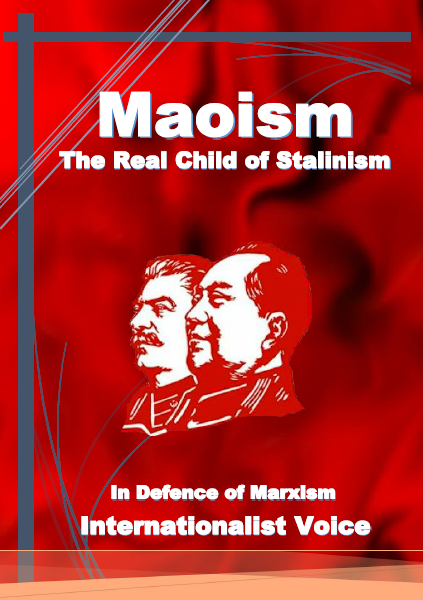A New Wave of Strikes and Workers’ Protests – Long live the independent workers’ struggle!
Peripheral capitalism – in crisis – with its ugly face, has created a miserable situation for wage slaves and the lower strata of society. The corona pandemic, the escalation of sanctions and the global crisis of capitalism have made economic and social conditions even more difficult than they were before for the working class. Under these circumstances, the working class and lower strata of society live below the poverty line and struggle to survive. In such circumstances, the presence of the working class on the battlefield where the struggle is enacted is of special importance, and the barbarity of capital will not go unanswered. It is glorious to see the protest by tens of thousands of workers against the inverted world of capitalism; the protest by thousands of wage slaves against wage slavery – instilling hope in the hearts of millions of workers; hope that the working class can protest against the barbaric system of capitalism, and the working class can challenge capitalism itself.
Last summer, for the first time since the defeat of the glorious workers’ protests in the autumn of 2018, we witnessed a new wave of strikes and workers’ protests, especially in the oil and petrochemical industries. Not only were the workers denied what they wanted, but the living conditions of the wage slaves became even more difficult, paving the way for a new wave of strikes and protests, especially in the oil and petrochemical industries. Since 20 June 2021, tens of thousands of oil contract workers have been on strike in refineries, petrochemical plants and power plants. The wave of strikes and protests soon spread and took on a nationwide dimension, sweeping from west to east and from north to south. More than 50 refineries, oil corporations, oil rigs, oil terminals and petrochemical corporations etc. have gone on strike.
The demands of strikers in the oil industry are, in fact, the same as last year’s. The main demands of the strikers are as follows:
- For wages to be increased to 12 million tomans:
Due to unbridled inflation, the workers want a minimum wage of 12 million tomans per month so that they can enjoy a decent standard of living.
- Improved shift work (20/10):
Many contract workers now work 24 days a month in deplorable conditions, away from their families, with only six days off to visit their families. Workers are demanding a pattern of 20 days worked, followed by 10 days off.
- Job security, with cancellation of contracts with contractors:
The workers are demanding cancellation of existing contracts with contractors and for these to be replaced by more favourable contracts that give them more permanence. They are also protesting against inadequate health and safety precautions and the barracks of the oil industry.
- Workplace safety and better working conditions:
Workers’ living and working conditions are of a very low standard, and improvements in deadly working environments, dormitories and health and well-being in the workplace are part of the workers’ demands.
In the past few days, we have witnessed the spread of protests and strikes to non-oil industries, and workers at the Sepahan Cement Factory, Yazd Steel contract workers, workers at the Butia Kerman Steel Company and Ahvaz Thermal Power Plant etc. have gone on strike. The spread of strikes to non-oil industries, in addition to strengthening the workers’ fighting spirit, puts striking workers in a better position and, most importantly, reduces the possibility of repression.
In recent decades, the Islamic bourgeoisie has pursued a policy of destroying the union of workers in one of the key industries by handing over various sectors of the oil industry to contractors and creating multiple employers. The contracting of companies plays a major role in concluding what effectively constitute slave contracts with no job security and few benefits, and over the last decade, a large proportion of oil and gas workers have been contracted.
The first reaction of the bourgeoisie to the workers’ strikes was mass dismissal of workers. Given the huge army of the unemployed, the bourgeoisie wants to use the unemployed as a weapon. On 22 June 2021, 700 striking workers at the Tehran refinery were fired. Other strikers are also at risk of being fired. A demand for the strikers to be allowed to return to work has been added to their other demands.
In recent years, the industrial proletariat has been involved in workers’ protests and strikes. Protests and strikes within the oil and petrochemical industry constitute the first widespread protest by workers in this sector, in such a large and nationwide form, since the workers’ protests between 1978 and 1980, and this issue is of particular importance. It is glorious to see thousands of workers striking in a key industry and protesting against the brutality of capital. It is glorious to protest the order of capital. But just pointing to the glory and brilliance of the workers’ protests and strikes prevents us from seeing the weaknesses of these protests. Learning from these weaknesses will prevent the same weaknesses from being repeated in future battles. The fundamental question that arises is why have the gains been so small after such widespread protests and labour strikes? The main weaknesses of the current strikes can be seen in the following factors:
- Although labour strikes have spread from north to south and from west to east, the strikes lack internal class solidarity. The disintegration of workers’ protests and strikes, combined with the lack of coordination between workers’ protests, is one of the main weaknesses of these strikes. Strikes occur separately and have no connection with other strikes. The working class therefore does not appear as a social class.
- Legalism, directing workers’ protests and strikes to legal and governmental channels, and the venting of workers’ class anger are some of the dangers that threaten strikes. Some want to limit the strikes and protests of workers simply by forcing workers to leave their place of work and sending them home. A strike does not merely interrupt work; it curtails the production of added value. Striking workers must stay in their dormitories and play an active role in decision-making and in advancing the protests.
- Trade union and syndicalist illusions may be few and far between in Iran (and have been especially so in recent oil industry strikes), but they are a deadly poison – a poison injected into the political milieu by syndicalists, unionists and the left of capital. Paper support for workers’ strikes on the part of trade unions and labour unions in Western countries is not only an illusion created by them but is also a slap in the face for the working class. These same unions themselves play an important role in enforcing most anti-labour laws in Western countries, even blacklisting protesting workers. Paper solidarity prevents the working-class battalions of the world class from realizing their real, factual class solidarity.
Chained workers!
Workers can maintain their solidarity through protests, resolute in their defence of the working class. We can only rely on our class power in our protests. Only by staying true to our class roots will we be able to repel the attacks of the bourgeoisie. Coordinating labour protests and linking labour strikes, in addition to showing class solidarity, will empower workers and pave the way for evolution of the class struggle to a higher level. Workers’ protests, because of their anti-capitalist nature, can not only spread to other capitalist countries and provoke class solidarity among the workers there but also challenge the capitalist state in in so doing.
Workers’ protests and strikes will gain ground!
Long live the independent workers’ struggle!
Onwards, strike committees!
M. Jahangiry
27 June 2021















